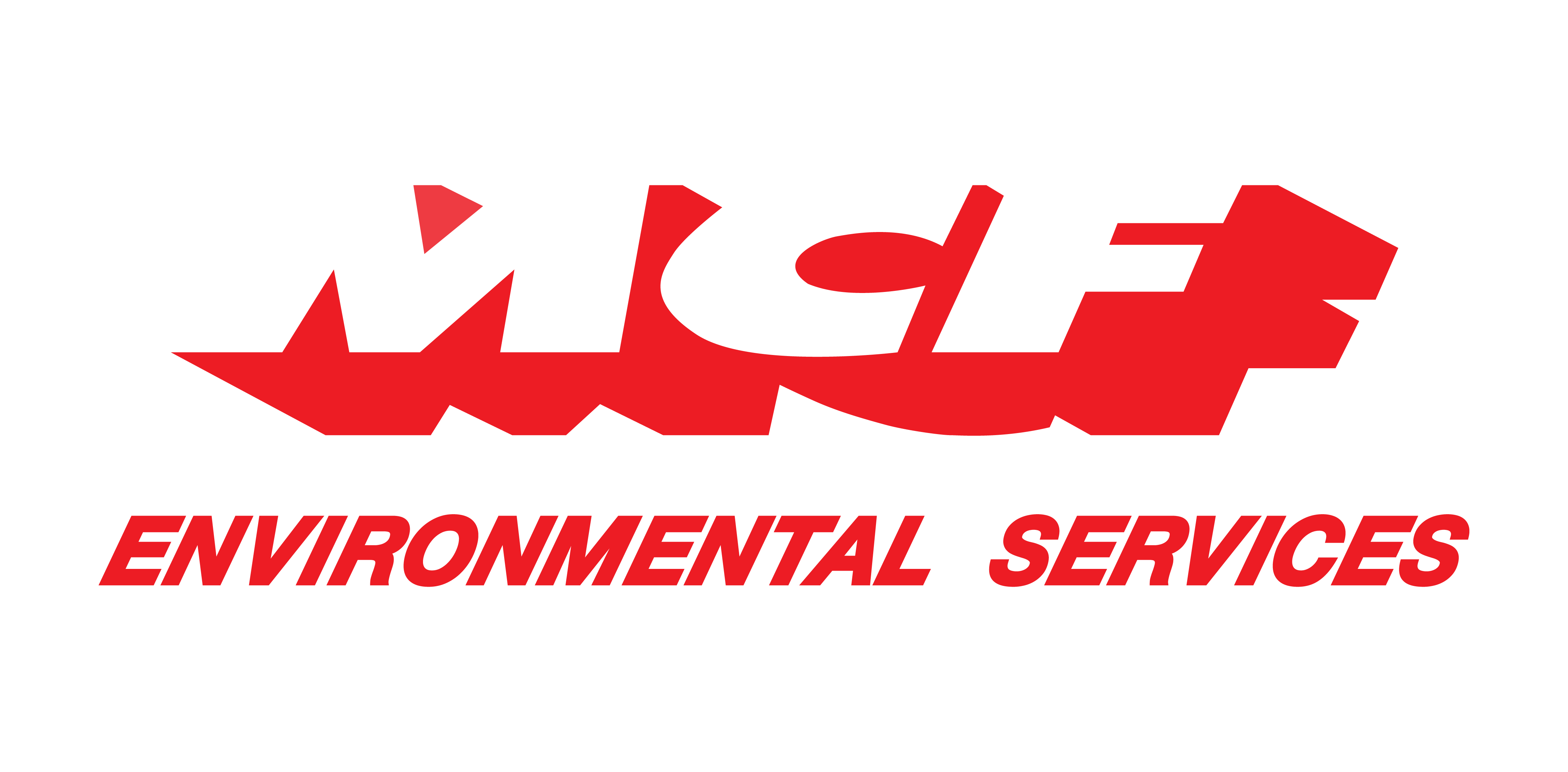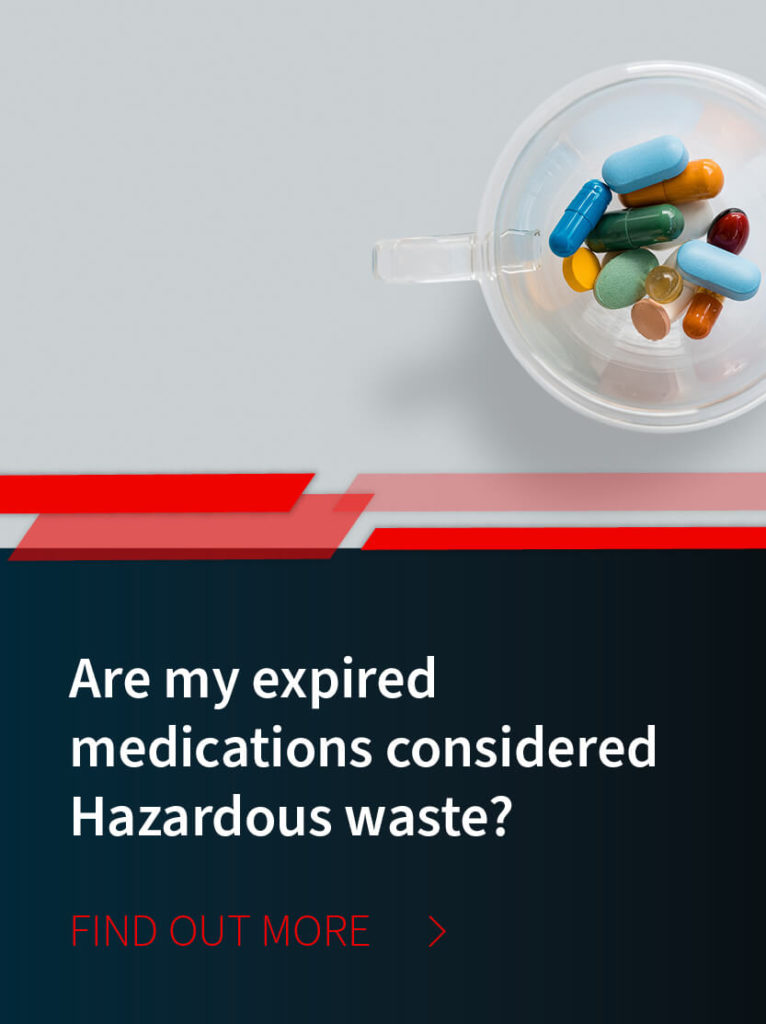
/ IN THIS BLOG
01 / Introduction to hand sanitizer disposal
Because of the COVID-19 pandemic, people and places everywhere have been purchasing unprecedented amounts of hand sanitizer in accordance with recommendations by the Centers for Disease Control (CDC). And so our country is awash in hand sanitizer.
Plenty of hand sanitizer is getting used. But a good deal needs to be disposed of because people are scaling back its use as the pandemic abates, or they’ve simply purchased more sanitizer than they can ever use.
This is a problem because hand sanitizer is highly flammable—and in some cases even toxic—and thereby requires hazardous waste management.
02 / Hazardous waste management of hand sanitizers
Most hand-sanitizing liquids & gels are classified as Class 3 Flammable Liquids as they’re 60‑to-95 percent ethyl or isopropyl alcohol. Thereby, OSHA specifies that any accumulation of 25 gallons or more must be placed in a flammable-liquid storage cabinet, even if it’s kept in multiple small containers. And hand sanitizers cannot be stored in office buildings at all.
03 / How to dispose of household amounts of hand sanitizer
The EPA is okay with discarding small amounts of hand sanitizer into the regular trash, although the agency counsels that it would be better to take small “residential” amounts to a local household hazardous-waste collection facility. Also, hand sanitizer should never be disposed of by pouring it down the drain, as the constituent ethyl or isopropyl alcohol (and in some cases methanol—see below) can cause environmental damage to the local wastewater infrastructure.
04 / Hazardous waste disposal of large amounts of hand sanitizer
Commercial or industrial amounts of hand sanitizer—at the SQG, LQG, or CESQG levels—require hazardous waste disposal. This is for the usual environmental reasons and rules. But additionally, hand sanitizer is flammable.
If you pour 50 or so gallons of alcohol-based sanitizer down the drain, you’ll be introducing enough flammable-vapor generating liquid into the local sewer to cause an explosion.
The press will denounce your business. And seven-digit EPA fines are the norm—not the exception.
05 / Hazardous waste disposal of hand sanitizers containing methanol or 1-propanol
The Food and Drug Administration (FDA) has cited a number of companies for selling hand sanitizers that contain methanol or 1-propanol, neither of which is approved for handwashing, as they both have toxic skin effects.
Unlike ethanol that’s present in liquors, methanol is poisonous if consumed. Also called “wood alcohol” or “methyl alcohol,” it’s mostly used to make fuels, solvents, and antifreeze. It’s colorless, volatile, and highly flammable.
1-propanol is as a highly-flammable multi-purpose solvent used in industry, as well as to make some cosmetics and antiseptics. It’s dangerous to eyes and harmful if swallowed. Inhalation can cause respiratory irritation and affect the central nervous system.
These recalled sanitizers are falsely labeled as containing only ethyl alcohol. And if your company has purchased a large volume of any one of them, you face the logistical challenge of how to dispose of it. (You can see a list of these recalled sanitizers here.)
In some cases, you might be able to return recalled sanitizers to the vendor. But if disposal is up to you, remember that they’re characteristically “ignitable” per C.F.R. § 261.21, so you must proceed with due consideration of RCRA hazardous waste disposal requirements.
It’s important to engage a company licensed to handle hazardous waste streams, not only from a treatment and disposal perspective, but from a regulatory governance and compliance standpoint. An accreditated hazardous waste provider will provide you with the right instruction, paperwork and compliance assurances to ensure your risk is covered.
06 / Alternatives to hazardous waste disposal of hand sanitizer
Disposal of unwanted hand sanitizer can be properly done using traditional hazardous waste disposal methods, which require RCRA registration, labeling, manifesting, and reporting. However, traditional hazardous waste disposal is not the only option. Consider:
Fuel blending. The purposeful mixing of different waste streams to induce specific chemical reactions is a recognized treatment method for hazardous waste. This is called fuel blending, wherein such chemical reactions might be instigated to neutralize the hazardous waste material.
Typically, this is done to make the waste less dangerous and thereby easier to store, transport, and ultimately dispose of. But in the case of unwanted hand sanitizer, fuel blending is a way to recover the constituent alcohol and transform it into an energy source that can be used or sold.
Incidental reduction. This refers to the situation wherein you combine waste streams with no intention of creating a specific chemical reaction, but the resulting mixture no longer exhibits the same physical or chemical characteristics as did the individual wastes prior to your mixing them.
In such a situation, the resulting waste will still need to be treated for the individual wastes that were consolidated—even if a chemical analysis proves that one or more waste characteristics have been eliminated in the consolidation process.
Unfortunately, neither fuel blending nor incidental reduction is specifically defined in EPA rules. Requirements vary by state and localities. (In general, fuel blending requires a hazardous waste installation and operation permit for storage and treatment). You need expert advice.
07 / You can recycle unwanted hand sanitizers
Recycling of hand sanitizers can be more cost-effective than hazardous waste disposal. This is because recycling doesn’t require registering the sanitizer as a hazardous waste. However, there are complicated environmental regulations about transportation and treatment. So as in all things regarding the EPA, it’s important to get expert advice.
08 / The upshot
Although they might seem beneficial and completely benign, hand sanitizers are a hazardous waste when it’s time to discard them, and thereby require hazardous waste disposal and management.
In almost all cases, it’s a state agency that provides enforcement and interpretation of EPA hazardous waste management regulations—not the federal government. Thus, individual states can differ about what constitutes a hazardous waste and how it should be handled. The same can be said about the rules & regulations for recycling.
Proceeding without good counsel about such local requirements can be expensive, litigious, and time-consuming.
Expert advice is crucial. Click on the link below to speak to one of our experts and get a non-obligation quote specific to the waste your facility is generating.
And thank you for reading our blog!
Robert Losurdo
President, COO








